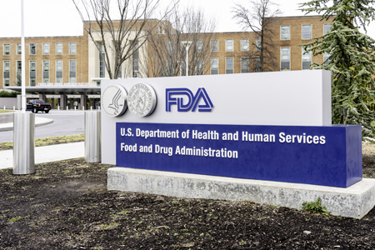FDA Adopts ICH Final Guidance On Bioanalytical Method Validation
By Tim Sandle, Ph.D.

Toward the end of 2022, the FDA issued guidance on the validation of biological assays, titled M10 Bioanalytical Method Validation and Study Sample Analysis.1 The guidance was originally issued in draft form in 2019; a little over three years was required to develop the final guidance document, and it was approved by ICH in May 2022. Hence, the FDA adoption completes international acceptance of a unified approach to biological assays. The objective of issuing the document was to address some concerns with regulatory submissions, and the document provides a set of recommendations for method validation for bioanalytical assays for nonclinical and clinical studies. As well as full validation, the guidance extends to partial validation where modifications are undertaken for previously validated assays. There is an additional intention centered on reducing the numbers of animals used in drug research and development.
This article considers the core objectives of the guidance and how it applies to both GMP and GLP activities.
Bioanalytical Methods
Accurately measuring the parent and active metabolites of drugs administered in nonclinical and clinical subjects is of importance for assessing drug efficacy and for ensuring measures are in place for patient safety.2 With biological products, the metabolites include blood, plasma, serum, and other body fluids and tissues. This means that the method must be suitable for the intended purpose and generate suitable data. To produce accurate data, attention needs to be paid to assay design, validation, and execution. This requires understanding important assay characteristics, notably:
- Specificity: ability to measure the desired analyte in a complex mixture
- Accuracy: agreement between measured and real value
- Linearity: proportionality of measured value to concentration
- Precision: agreement between a series of measurements
- Range: concentration interval where method is precise, accurate, and linear
- Detection limit: lowest amount of analyte that can be detected
- Quantitation limit: lowest amount of analyte that can be measured
- Robustness: reproducibility under normal but variable laboratory conditions
To support these parameters, the guidance usefully provides pointers for control of the environment, matrix effects, and the collection and preparation of samples. To demonstrate sufficient robustness, the validation must be assessed for both the metabolite and the parent drug combination. Of particular concern is the matrix effect, which refers to the influence of other components present in a sample on an analytical assay. These can manifest as a loss in response (and underestimation of the quantity of the target analyte) or as an increase in response (leading to an overestimated result).3
Also of importance is sample preparation, designed to clean up a sample before analysis and/or to concentrate a sample to improve its detection (a chemical or instrumental procedure by which analytical data is eventually obtained). In selecting a method, it is necessary consider the following parameters:
- sample type (matrix) and size (a lot or a little)
- data required (qualitative/quantitative)
- expected level(s) of analyte(s)
- precision and accuracy expected
- likely interferences
- number and frequency of samples for analysis
Two types of methods are given prominence within the ICH/FDA document, which reflects the appropriateness of the methods as well as their widespread commercial use:
- chromatographic assays (the method of choice for measurement of small molecule concentrations in the biological matrix) and
- ligand-binding assays (used for the quantification of large molecules such as peptides and proteins).
These assays can present a formidable challenge for the analyst.4 It is especially important that the exact chromatographic conditions are defined, including selection of column, defining the mobile phase, establishing flow conditions, and assessing the detection capabilities.
The primary technologies used for these assays are liquid chromatography or gas chromatography, used in combination with mass spectrometry detection.
Designing The Bioassay
The guidance directs the user to think about product and process design. This includes understanding the analyte of interest and how this relates to the physicochemical properties of the drug. This should then lead to a review of any preexisting analytical methods that may be applicable. In my personal professional experience, the following questions are useful starting points when planning analytical method validation:
- Does the method measure the intended analyte?
- For example, does anything interfere with the measurement, and is the method specific or selective for the analyte?
- What is the variability associated with these measurements?
- For example, what are the accuracy and precision of the method?
- What is the range in measurements that provide reliable data?
- For example, what is the sensitivity of the method (e.g., what is the lower limit of quantitation (LLOQ) of the method, and what is the upper limit of quantitation of the method (ULOQ)?)
- How do sample collection, handling, and storage affect the reliability of the data from the bioanalytical method?
- For example, what steps need to be followed while collecting samples?
- Do the samples need to be frozen during shipping?
- What temperatures are required to store the samples, and how long can the samples be stored?
The new guidance sets out what is required for demonstrating accuracy and precision. Here, within-run accuracy and precision should be evaluated by analyzing at least five replicates at each concentration level in each analytical run, and between-run accuracy and precision should be evaluated by analyzing each concentration level in at least three analytical runs over at least two days.
The second phase concerns method development, which requires identifying the procedures and conditions involved with quantifying the analyte.
Reporting
Regulatory authorities have been concerned with the quality of submissions. The guidance includes recommendations for the correct supporting documents needed, according to the specific type of bioanalytical method, and recommended scientific and technical factors that need to be detailed.
A common error is insufficiently presenting the history and evolution of methods, such as failing to explain revisions, unique aspects and missing supportive data. This error and others are addressed with recommendations for both the validation report and the bioanalytical report. In terms of the differences between these types of reports, the validation report contains a summary of the validation performances including details of the applied analytical method, details of the assay procedure, reference standards, calibration standards and QC samples, run acceptance criteria, a table of all analytical runs with analysis dates, reasons for any failures, data on selectivity, and any deviations from the method. With selectivity, this concerns the ability of an analytical method to differentiate and measure the analyte in the presence of interfering substances in the blank biological matrix.
The subsequent analytical report provides more detailed information, such as the overall (mean) accuracy and precision of the QC samples of all accepted runs.
Conclusion
The guidance should be studied carefully by laboratory managers and regulatory departments, especially to ensure that the level of validation is suitable for the intended purpose of the assay and to ensure that the assay is fit-for-purpose.
You can submit comments to the FDA at any time. All written comments should be identified with the docket number FDA-2019-D-1469.
References
- FDA. M10 Bioanalytical Method Validation and Study Sample Analysis, November 2022: https://www.fda.gov/media/162903/download
- Shah V, Midha K, Dighe S et al (1992) Analytical methods validation: bioavailability, bioequivalence, and pharmacokinetic studies. J Pharm Sci 81(3):309–312
- Capka, V., Carter, S. (2007) Minimizing matrix effects in the development of a method for the determination of salmeterol in human plasma by LC/MS/MS at low pg/mL concentration levels. Journal of Chromatography B. 856):285–293
- Viswanathan CT, Bansal S, Booth B et al (2007) Quantitative bioanalytical methods validation and implementation: best practices for chromatographic and ligand binding assays. Workshop/Conference Report. AAPS J 9(1):E30–E42
About The Author:
 Tim Sandle, Ph.D., is a pharmaceutical professional with wide experience in microbiology and quality assurance. He is the author of more than 30 books relating to pharmaceuticals, healthcare, and life sciences, as well as over 170 peer-reviewed papers and some 500 technical articles. Sandle has presented at over 200 events and he currently works at Bio Products Laboratory Ltd. (BPL), and he is a visiting professor at the University of Manchester and University College London, as well as a consultant to the pharmaceutical industry. Visit his microbiology website at https://www.pharmamicroresources.com.
Tim Sandle, Ph.D., is a pharmaceutical professional with wide experience in microbiology and quality assurance. He is the author of more than 30 books relating to pharmaceuticals, healthcare, and life sciences, as well as over 170 peer-reviewed papers and some 500 technical articles. Sandle has presented at over 200 events and he currently works at Bio Products Laboratory Ltd. (BPL), and he is a visiting professor at the University of Manchester and University College London, as well as a consultant to the pharmaceutical industry. Visit his microbiology website at https://www.pharmamicroresources.com.
